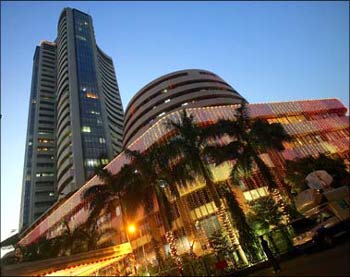 Investors might soon get to bet on various versions of the Bombay Stock Exchange’s (BSE) benchmark index, the Sensex, and its other key gauges soon.
Investors might soon get to bet on various versions of the Bombay Stock Exchange’s (BSE) benchmark index, the Sensex, and its other key gauges soon.
BSE, which recently tied up with S&P Dow Jones, the world’s largest index provider, has planned to launch different types of indices, which could be based on aspects, such as volatility and dividend yield.
For instance, the Sensex could have different versions such as low volatility and high dividend yield but will be structured with the same set of 30 stocks. So, a low-volatility Sensex could have stocks with that feature enjoying the highest weightage
Its new US-based partner, S&P Dow Jones, which has already launched different versions of the S&P 500 in America, will help BSE to launch these. In February, S&P and BSE entered into a partnership for maintaining and disseminating indices. The tie-up was formed shortly after a similar agreement ended between BSE’s bigger rival, the National Stock Exchange and the S&P.
“It is not just a case of having an index to represent a particular size or segment of the market. It has moved on to investing strategy -- having different versions of the same indices,” said John Davies, vice-president and global head of exchange-traded products at S&P Dow Jones Indices. “You can have different flavours for the BSE suite of indices and that's
Davies didn't specify when the indices would be introduced. “Over the next few weeks, a number of people are coming over from New York and London to visit the BSE, to discuss different aspect of the existing index business and how we can integrate S&P Dow Jones Indices’ international practices and expertise into what's relevant for the Indian market,” he said.
The methodology to form different versions of the same index are simple, said Davies. “A low-volatility version is very straightforward. We take the stocks, we look for the top low-volatility ones and then inversely weight them in the basket. It is a simple mechanism, it compressed the volatility and you can still participate in the performance of the underlying (shares).”
The recent spike in the market volatility saw a lot of money moving into the low-volatility and dividend-yield versions of S&P 500s. Also, these two tweaked versions had outperformed the S&P500 index in the past year.
Brokers said different versions of a more broad-based index like the BSE 200 or BSE 500 would be more efficient than having more variants of the 30-share Sensex.
Davies said a 'full toolkit' of ETF products that provide exposure to all the segments like fixed income, equity and commodities needs to be developed for the Indian market. “As the investment attitude and culture evolves, other asset classes will be required to be part of the portfolio,” he said.












 © 2025
© 2025